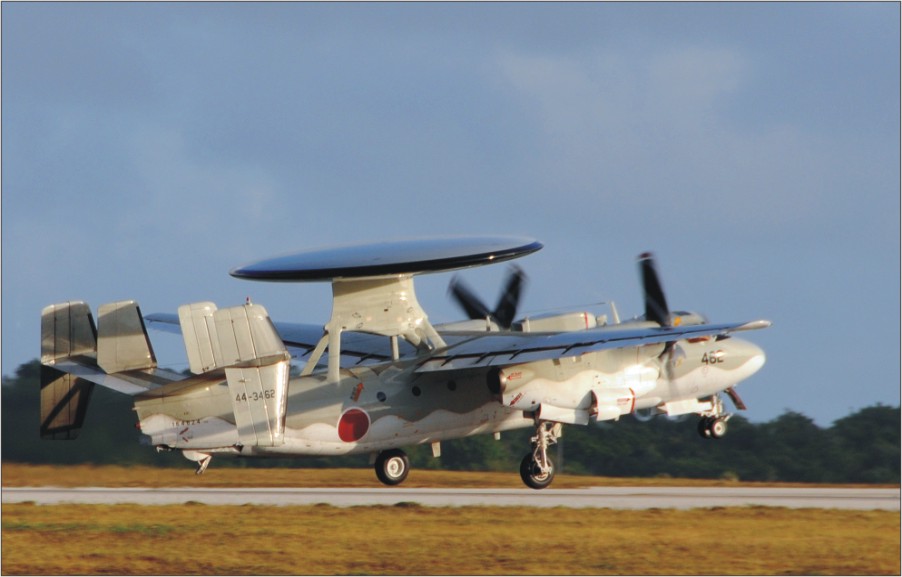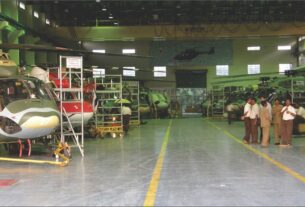Air defence, perforce, is a multilayered concept. Till India went nuclear it was sufficient to be able to detect and engage low-flying aircraft and medium range missiles armed with conventional warheads.
No more. India now has to ensure that all means of ingress into its airspace are well covered by sensors so as no nuclear-tipped missile is able to penetrate our defences.
Even as India planned its Integrated Guided Missile Development Programme, it had simultaneously laid the foundations of an air defence ground environment system (ADGES). Nonetheless it was acknowledged that there were gaps in the radar network within the ADGES but that it would not leave India’s vital points and vital areas accessible to air attack.
Over the past decade India has been closing the gaps in the ADGES with imported airborne warning and control systems (AWACS) and indigenously developed airborne early warning and command system (AEW&C). To be doubly sure of being able to intercept anything flying at rooftop height or tree level the use of aerostats-helium-filled tethered balloons carrying a platform on which are mounted radars and sensors for day-night detection of flying objects, have been introduced in certain places.
Monitoring airspace
Together with other conventional ground based static and mobile radar systems the AWACS and aerostats and other airborne derivatives do not just close gaps they create overlaps which, if monitored efficiently will give sufficient reaction time for own anti-aircraft/
anti-cruise/anti-ballistic missiles to be fired at standoff ranges so that fragments do not reach their targets as happened during the second Gulf War when both Israel and Saudi Arabia were hit by Iraqi Scud missiles in Tel Aviv and Dhahran respectively.
An attempt was made at the turn of the century to create an indigenous airborne early warning and command system (AEW&C) based on the much-maligned AVRO HS-748. But when the first test bed with imported radome from France crashed during a test flight the project was abandoned with unseemly haste.
Negotiations for a full-fledged AWACS system based on the Russian Ilyushin Il-76 medium transport aircraft, dozens of which were already in service with the Indian Air Force, fitted with Israeli Phalcon radar were successfully concluded and the first three of these AWACS are already in service.
They form the highest echelon of “seeing eyes” over Indian airspace and they can look deep into Pakistan and China to ascertain air activity in Pakistani air bases as far away as Sargodha in the North West Frontier Province (now Khyber Pakhtoonkhwa) and can either vector (direct) IAF aircraft to the appropriate point of interception or initiate the launch of surface-to-air missiles whichever is most cost effective.
These AWACS gives 360 degree coverage in all directions and provide sufficient warning and reaction time to use appropriate counter-measures.
The initial requirement was three plus three but, given the nature of the threats (two-front war with a combo of Pakistan and China with the latter operating from bases in the Indian Ocean littoral that are part of its ‘String of Pearls’ network), the Indian Air Force would need nearly two dozen such AWACS.
It can be used for operations along the land borders from Pakistan’s Gwadar port on the Baluchistan border to Arunachal Pradesh in the North-east with eyes on facilities that could become available to China in Myanmar.
Indigenous capabilities
Simultaneously, India had resumed its indigenous AEW&C project using a DRDO created phased array antenna instead of a rotating radome fixed to a Brazilian Embraer transport aircraft.
Being of less range and coverage capacity (270 degrees compared to 360 degrees of the Il-76 mounted Phalcon radar) it will make up the second tier of the air defence network.
The sensor has the abilities to search, track-while-scan, priority tracking, and high performance tracking. The radar provides a fast-beam agile system that can operate in several modes concurrently.
Interoperability with AWACS, other AEW&C aircraft, fighters and ground-exploitation stations is ensured using the datalinks produced by Bharat Electronics Ltd with voice and data channels.
The aircraft cabin houses five operator work stations to adequately meet requirements of the operational mission tasks. An air-to-air refueling system enables extended operations at times of need. The endurance of the platform aircraft is about nine hours with one air-to-air refueling and a great deal depends on endurance, alertness and efficiency that the crew and antenna operators can display in a full-blown war situation.
South Asia being a nuclearized zone, it is extremely important that if nuclear weapons are activated and released there should be precise and accurate interception well within enemy territory so that the residual radiation is contained within the territory of the perpetrator of the attack.
An increasingly crucial requirement for all airborne platforms is a self defence suite that emits decoys to deflect enemy missiles because more and more countries have come to realize the importance of knocking out the eyes in the sky so as to drastically reduce the opponent’s network centric operations.
China has been busy acquiring long range air-to-air missiles to reduce the efficacy of air operations of nations on its periphery especially India, Japan and Vietnam. The self-protection gadgetry includes a passive Missile Approach Warning System, a Radar Warning Receiver and countermeasures dispensers. The SPS will be integrated with the Electronic Support Measures and Communications Support Measures suite.
Air defence
In a third tier of the air defence surveillance network the Indian Air Force imported aerostats-tethered helium-filled blimps that carry aloft day and night sensors to be able to pinpoint the direction from which enemy aircraft may approach Indian territory.
These radars are effective and can be installed at treetop and urban high-rise heights which tend to be below altitudes covered by conventional radars.
The IAF bought four aerostats from an Israeli firm for deployment in the North-east. But after an accident, in which one platform was damaged, the Israelis quoted a huge figure just for repairing it. Thus, the IAF decided to look elsewhere for a second tranche of six to avoid being blackmailed by the Israeli firm which is clearly trying to capitalize on India’s security vulnerability.
The Israeli aerostat carry a variety of sensors, including EL/M-2083 air surveillance radars provided by IAI Elta Systems, Communications Intelligence (COMINT) and Signals Intelligence (SIGINT) payloads providing persistent, all-weather wide-area coverage of sensitive border areas, particularly covering sectors where land-based radars offer limited coverage, due to the topography or other limiting factors.
At that altitude, a large aerostat can carry a two-ton payload. The cable by which it is tethered to a pylon also supplies power to operate the systems on board which means the blimp can stay up for about 30 days at a time before it has to be brought down for maintenance on its radars.
Often, two radars are carried. One is surveillance radar; the other is a precision track and illumination radar (PTIR). The surveillance radar provides long-range coverage (about 500 kilometers for the EL/M-2083), while the PTIR, which is a steerable system capable of tracking multiple targets, can focus in on events that may be taking place across the border.
India has been experimenting with its own Akashdeep aerostat developed by Aerial Delivery Research & Development Establishment (ADRDE), Agra Cantt, a laboratory under Defence Research & Development organization (DRDO).
It can carry a 300 kg payload to an altitude of 1,000 meters. It can survey areas up to 20 km away and with advanced cameras and radar; its range is variously reported as 60 km or 100 km. The aerostat can be used for surveillance, intelligence, broadcasting communication relay and jamming of electronic systems.
A second generation variant named Nakshatra is under consideration by ADRDE. It plans to build an aerostat system for operations up to a height of 4500-5,000 meters and having a range variously reported as 200-250 km or 450 km with a payload capacity of 800 kg to 1 tonne and 17,000 cubic metre volume.





